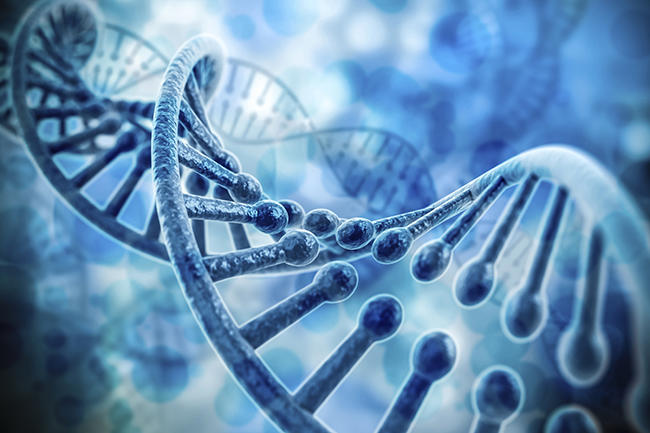Gene Regulation and Epigenetics
Gene regulation and epigenetics research focuses on the aberrant expression of genes that regulate normal cell function, which is a hallmark of cancer cells. This regulation often involves altering the ability of the DNA to organize with histone proteins into a higher-order chromatin structure that is permissive for gene expression.
Key research areas include:
- Chemical and structural modifications of DNA and RNA, and associated proteins
- Enzymes involved in the modification of DNA and histones (e.g., methylation, acetylation, etc.)
- Chromatin architectural proteins that mediate higher-order chromatin structure or control DNA accessibility and regulate gene expression
- Altered chromatin assembly, architecture and domain structure
- Characterization of major regulatory regions of DNA involved in gene expression and their interacting proteins
- Identification and role of non-coding RNAs in regulating gene expression
Emerging research areas include epigenetic changes that drive pediatric solid tumors, the role of phase separation in nuclear organization and compartmentalization, epigenetic mechanisms in lineage plasticity during tumorigenesis and treatment resistance, as well as oncogenic histone-alterations.
Mechanisms of Genomic Instability
Certain chromosomal aberrations are hallmarks of tumor initiation and progression. Genomic instability arises from carcinogen-induced and endogenous DNA damage, including altered fidelity of DNA replication and translesion DNA polymerases. The resulting lesions encompass a wide spectrum of defects ranging from localized point mutations to large chromosomal rearrangements, such as deletions, amplifications, inversions, translocations, and duplications.
Key research areas include:
- Mechanisms involved in mitotic chromosome segregation and chromosome imbalance, translocations, and fragile sites
- Telomere alterations, mechanisms of telomerase function and dysfunction, as well as alternative telomere maintenance pathways in cancer initiation and progression
- Genomic instability arising from DNA replication stress
- Role of oncogenes in promoting genomic instability and the impact of transcription on genome integrity
Emerging research areas include understanding RNA metabolism and RNA:DNA hybrids (R loops) in genomic instability, new roles for replication stress in driving genomic instability, the impact of extrachromosomal DNA (ecDNA) in cancer, as well as mechanisms and cellular consequences of catastrophic chromosomal events like chromothripsis.
Cancer Genetics
Research in cancer genetics focuses on the identification, mapping, and characterization of genetic changes involved in tumor initiation and progression.
Key research areas include:
- Studies of intra-tumoral genetic heterogeneity and clonal evolution
- Functional genomics, including the role of cancer gene variants and single nucleotide polymorphisms
- Application of model systems for gene discovery and genetic screens to identify loci that cooperate with known cancer genes
- Genes activated or repressed by radiation and chemical exposure
- The role of genetic variation in cancer health disparities
Emerging areas of interest are the role of chromosome translocations in solid tumor development, the study of extrachromosomal DNA in oncogene amplification and the use of mutational signatures to identify defective DNA repair pathways in tumors.
Mechanisms of DNA Damage and Repair
Research in this area encompasses a wide range of DNA repair pathways, including nucleotide and base excision repair, transcription-coupled repair processes, homologous recombination, non-homologous and alternative end-joining processes, cross-link repair and mismatch repair. An understanding of the DNA repair defects that underlie genomic instability in cancer can be used to design strategies to selectively target cancer cells.
Key research areas include:
- The repair of DNA lesions and DNA breaks induced by carcinogens, mutagens, reactive oxygen species, chemotherapeutic agents, and ionizing/non-ionizing radiation
- Lesion-induced conformational changes in DNA and how altered nuclear and chromatin integrity affect DNA repair
- Regulators of DNA repair pathway choice and their potential as cancer vulnerabilities
Emerging areas include the repair of stalled or collapsed replication forks and effectors of replication restart during replication stress, understanding the significance and repair of single stranded DNA gaps, mechanisms of alternative end-joining and their role in mutagenic DNA repair, and mechanisms of mitochondrial DNA repair. In addition, there are emerging efforts to design therapeutic strategies that target vulnerabilities of cancer cells that carry defects in DNA repair and/or DNA damage signaling.
Mechanisms of DNA Damage Signaling
Studies dissecting the cellular response to DNA damage focus on signaling events and pathways in the nucleus, cytoplasm, and mitochondria of normal and transformed human cells, during different phases of the cell cycle, and in non-dividing indolent states.
Key research areas include:
- How cells sense DNA lesions/chromosomal damage and activate DNA damage response (DDR) signaling
- DNA damage-induced cell death
- DDR checkpoint failure and mitotic catastrophe
- Activation of immune signaling by DNA damage
An emerging research area investigates the connection between genomic instability and the activation of immune sensors, such as cGAS/STING or RIG-I, to modulate immune signaling.
Chemical and Physical Carcinogenesis
Identifying and understanding the mechanisms by which chemical and physical carcinogens initiate and promote tumors are important in determining how environmental exposures can contribute to cancer. Carcinogenic agents include chemical mutagens, tobacco smoke, toxins, ultraviolet light, radiation, asbestos, and reactive oxidative species.
Key research areas include:
- Mechanisms of carcinogenesis by DNA adduct generation or the alteration of signaling pathways
- Formation, detection and metabolism of chemical carcinogens
- Mechanisms of DNA mutagenesis and characterization of DNA lesions induced by chemicals, ultraviolet light, ionizing radiation, and endogenous reactive oxygen species
- Mechanisms of cancer initiation and promotion by radiation, chemicals, and physical agents
Emerging research areas are the toxicity of cannabis and nontraditional tobacco products (e.g., electronic cigarettes, heat-not-burn products and water pipes) and the use of mutational signatures to link environmental exposures to cancer.

